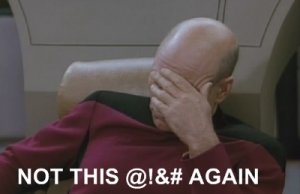- Joined
- Jan 7, 2009
- Messages
- 9,725
Copied from another thread to give this subject an independent conversation
To start, here''s the definition of "Science" from dictionary.com
sci·ence [sahy-uhns] Show IPA
–noun
1.
a branch of knowledge or study dealing with a body of facts or truths systematically arranged and showing the operation of general laws: the mathematical sciences.
2.
systematic knowledge of the physical or material world gained through observation and experimentation.
3.
any of the branches of natural or physical science.
4.
systematized knowledge in general.
5.
knowledge, as of facts or principles; knowledge gained by systematic study.
6.
a particular branch of knowledge.
7.
skill, esp. reflecting a precise application of facts or principles; proficiency.
It''s rather ambiguous in relation to this conversation. But if we consider point 1- where the words "facts or truths" are used, that will get my point across.
First, you are grouping GIA and AGS cut grading with ASET and HCA. Clearly the trade does not view these items in the same group.
I believe we can all agree that there are valid experts in the field of diamonds who respect GIA and AGSL cut grading, but do not feel that ASET IS and HCA provide meaningful results.
But even if we eliminate the HCA/IS and ASET, GIA''s cut grade is a combination of scientific research combined with human observation. That aspect may be obtained and organized scientifically, but the opinions themselves are not science- they are opinions.
Is it a "fact" or "truth" that a stone getting a better score on the HCA is "better cut" than another lower scoring stone?
The answer here is clear- no.
Is it a fact that ASET can measure light return? Yes, I believe it is.
However the relevance of this information is not clear, nor can it''s relevance be inferred to be a scientific indicator of beauty.
Besides the fact that ASET measures a stationary stone, which will never be viewed in such a manner in real life, it''s not agreed that increased light return equals increased beauty.
Science allows Paul to cut consistently gorgeous stones, in that I agree- but it does not allow us to judge these stones "better cut" than others that may also garner similar cut grades from GIA or AGSL, yet have different angles and measurements which are inherently different than what Paul cuts.
Date: 3/10/2010 10:52:16 AM
Author: Paul-Antwerp
GIA''s and AGS''s cut-grade, ASET, IS and HCA are indeed valid techniques, some of them vetted by science, to judge potential brightness most often of a round brilliant only.
Live long,
To start, here''s the definition of "Science" from dictionary.com
sci·ence [sahy-uhns] Show IPA
–noun
1.
a branch of knowledge or study dealing with a body of facts or truths systematically arranged and showing the operation of general laws: the mathematical sciences.
2.
systematic knowledge of the physical or material world gained through observation and experimentation.
3.
any of the branches of natural or physical science.
4.
systematized knowledge in general.
5.
knowledge, as of facts or principles; knowledge gained by systematic study.
6.
a particular branch of knowledge.
7.
skill, esp. reflecting a precise application of facts or principles; proficiency.
It''s rather ambiguous in relation to this conversation. But if we consider point 1- where the words "facts or truths" are used, that will get my point across.
First, you are grouping GIA and AGS cut grading with ASET and HCA. Clearly the trade does not view these items in the same group.
I believe we can all agree that there are valid experts in the field of diamonds who respect GIA and AGSL cut grading, but do not feel that ASET IS and HCA provide meaningful results.
But even if we eliminate the HCA/IS and ASET, GIA''s cut grade is a combination of scientific research combined with human observation. That aspect may be obtained and organized scientifically, but the opinions themselves are not science- they are opinions.
Is it a "fact" or "truth" that a stone getting a better score on the HCA is "better cut" than another lower scoring stone?
The answer here is clear- no.
Is it a fact that ASET can measure light return? Yes, I believe it is.
However the relevance of this information is not clear, nor can it''s relevance be inferred to be a scientific indicator of beauty.
Besides the fact that ASET measures a stationary stone, which will never be viewed in such a manner in real life, it''s not agreed that increased light return equals increased beauty.
Science allows Paul to cut consistently gorgeous stones, in that I agree- but it does not allow us to judge these stones "better cut" than others that may also garner similar cut grades from GIA or AGSL, yet have different angles and measurements which are inherently different than what Paul cuts.










300x240.png)